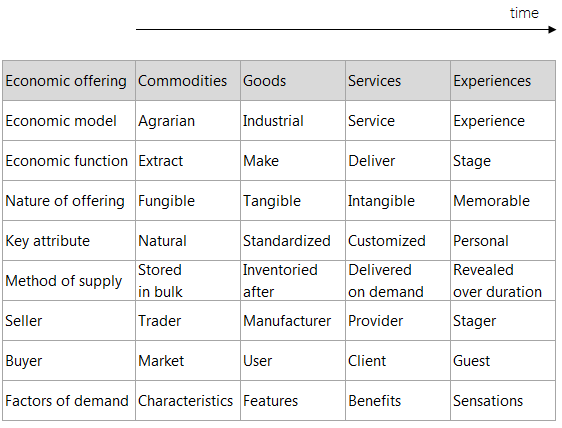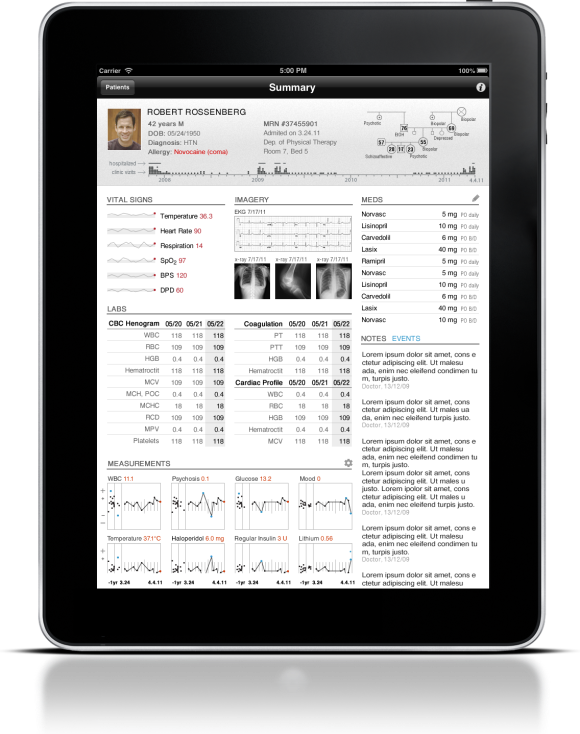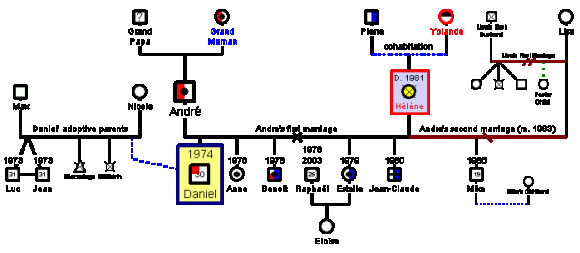We buy things we don’t need
with money we don’t have
to impress people we don’t like
Tyler Durden
Fight Club
Consumption sucks
That sucks. That got to be changed. Fight Club changed it that violent way… Thanks God it was in book/movie only. We are changing it different way, peacefully, via consumerism. We are powerful consumers in new economy – Experience Economy. Consumers don’t need goods only, they need experiences, staged from goods, services and something else.
Staging experience is difficult. Staging personal experience is a challenge for this decade. We have to gather, calculate and predict about literally each customer. The situation gets more complicated with growing Do It Yourself attitude from consumers. They want to make it, not just to buy it…
If you have not so many customers then staging of experience could be done by people, e.g. Vitsoe. They are writing on letter cards exclusively for you! To establish realistic human-human interface from the very beginning. You, as consumer, do make it, by shooting pictures of your rooms and describing the concept of your shelving system. New Balance sneakers maker directly provides “Make button”, not buy button, for number of custom models. You are involved into the making process, it takes 2 days, you are informed about the facilities [in USA] and so on; though you are just changing colors of the sneaker pieces, not a big deal for a man but the big deal for all consumers.
There are big etalons in Experience Economy to look for: Starbucks, Walt Disney. Hey, old school guys, to increase revenue and profit think of price goes up, and cost too; think of staging great experiences instead of cutting costs.
Webization of life
Computers disrupted our lives, lifestyle, work. Computers changed the world and still continue to change it. Internet transformed our lives tremendously. It was about connected machines, then connected people, then connected everything. The user used to sit in front of computer. Today user sits within big computer [smart house, smart ambient environment, ICU room] and wears tiny computers [wristbands, clasps, pills]. Let’s recall six orders of magnitude for human-machine interaction, as Bill Joy named them – Six Webs – Near, Hear, Far, Weird, B2B, D2D. http://video.mit.edu/embed/9110/
Nowadays we see boost for Hear, Weird, D2D. Reminder what they are: Hear is your smartphone, smartwatch [strange phablets too], wearables; Weird is voice interface [automotive infotaintent, Amazon Echo]; D2D is device to device or machine to machine [aka M2M]. Wearables are good with anatomical digital gadgets while questionable with pseudo-anatomical like Google Glass. Mobile first strategies prevail. Voice interop is available on all new smartphones and cars. M2M is rolling out, connecting “dumb” machines via small agents, which are connected to the cloud with some intelligent services there.
At the end of 2007 we experienced 5000 days of the Web. Check out what Kevin Kelly predicts for next 5000 days [actually less than 3000 days from now]. There will be only One machine, its OS is web, it encodes trillions of things, all screens look into One, no bits live outside, to share is to gain, One reads it all, One is us…
Webization of things
Well, next 3000 days are still to come, but where we are today? At two slightly overlapping stages: Identification of Everything and Miniaturization & Connecting of Everything. Identification difficulties delay connectivity of more things. Especially difficult is visual identification. Deep Neural Networks did not solve the problem, reached about 80% accuracy. It’s better than old perceptrons but not sufficient for wide generic application. Combinations with other approaches, such as Random Forests bring hope to higher accuracy of visual recognition.
Huge problem with neural networks is training. While breakthrough is needed for ad hoc recognition via creepy web camera. Intel released software library for computer vision OpenCV to engage community to innovate. Then most useful features are observed, improved and transferred from sw library into hw chips by Intel. Sooner or later they are going to ship small chips [for smartphones for sure] with ready-made special object recognition bits processing, so that users could identify objects via small phone camera in disconnected mode with better accuracy than 85-90%, which is less or more applicable for business cases.
As soon as those two IoT stages [Identification and Miniaturization] are passed, we will have ubiquitous identification of everything and everyone, and everything and everyone will be digitized and connected – in other words we will create a digital copy of us and our world. It is going to be completed somewhere by 2020-2025.
Then we will augment ourselves and our world. Then I don’t know how it will unfold… My personal vision is that humanity was a foundation for other more intelligent and capable species to complete old human dream of reverse engineering of this world. It’s interesting what will start to evolve after 2030-2040. You could think about Singularity. Phase shift.
Hot industries in IoT era
Well, back to today. Today we are still comfortable on the Earth and we are doing business and looking for lucrative industries. Which industries are ready to pilot and rollout IoT opportunities right away? Here is a list by Morgan Stanley since April 2014:
Utilities (smart metering and distribution)
Insurance (behavior tracking and biometrics)
Capital Goods (factory automation, autonomous mining)
Agriculture (yield improvement)
Pharma (critical trial monitoring)
Healthcare (leveraging human capital and clinical trials)
Medtech (patient monitoring)
Automotive (safety, autonomous driving)
What IoT is indeed?
Time to draw baseline. Everybody is sure to have true understanding of IoT. But usually people have biased models… Let’s figure out what IoT really is. IoT is synergistic phenomenon. It emerged at the interaction of Semiconductors, Telecoms and Software. There was tremendous acceleration with chips and their computing power. Moore’s Law still has not reached its limit [neither at molecular nor atomic level nor economic]. There was huge synergy from wide spread connectivity. It’s Metcalfe’s Law, and it’s still in place, initially for people, now for machines too. Software scaled globally [for entire planet, for all 7 billions of people], got Big Data and reached Law of Large Numbers.
As a result of accelerated evolution of those three domains – we created capability to go even further – to create Internet of Things at their intersection, and to try to benefit from it.
Reference architecture for IoT
If global and economic description is high-level for you, then here you go – 7 levels of IoT – called IoT Reference Architecture by Cisco, Intel and IBM in October 2014 at IoT World Forum. A canonical model sounds like this: devices send/receive data, interacting with network where the data is transmitted, normalized and filtered using edge computing before landing in databases/data storage, accessible by applications and services, which process it [data] and provide it to people, who will act and collaborate.
Who is IoT?
You could ask which company is IoT one. This is very useful question, because your next question could be about criteria, classifier for IoT and non-IoT. Let me ask you first: is Uber IoT or not?
Today Uber is not, but as soon as the cars are self-driven Uber will be. An only missing piece is a direct connection to the car. Check out recent essay by Tim O’Reilly. Another important aspect is to mention society, as a whole and each individual, so it is not Internet of Things, but it is Internet of Things & Humans. Check out those ruminations http://radar.oreilly.com/2014/04/ioth-the-internet-of-things-and-humans.html
Humans are consumers, just a reminder. Humans is integral part of IoT, we are creating IoT ourselves, especially via networks, from wide social to niche professional ones.
Software is eating the world
Chips and networks are good, let’s look at booming software, because technological process is depending vastly on software now, and it’s accelerating. Each industry opens more and more software engineering jobs. It started from office automation, then all those classical enterprise suites PLM, ERP, SCADA, CRM, SCM etc. Then everyone built web site, then added customer portal, web store, mobile apps. Then integrated with others, as business app to business app aka B2B. Then logged huge clickstreams and other logs such as search, mobile data. Now everybody is massaging the data to distill more information how to meet business goals, including consumerism shaped goals.
- Several examples to confirm that digitization of the world is real.
Starting from easiest example for understanding – newspapers, music, books, photography, movies went digital. Some of you have never seen films and film cameras, but google it, they were non-digital not so long ago. Well, last example from this category is Tesla car. It is electrical and got plenty of chips with software & firmware on them. - Next example is more advanced – intellectual property shifts to digital models of goods. 3D model with all related details does matter, while implementation of that model in hard good is trivial. You have to pay for the digital thing, then 3D print it at home or store. As soon as fabrication technology gets cheaper, the shift towards digital property will be complete. Follow Formula One, their technologies are transferred to our simpler lives. There is digital modeling and simulations, 3D printed into carbon, connected cars producing tons of telemetry data. As soon as consumer can’t distinguish 3D printed hard goods from produced with today’s traditional method, and as soon as technology is cheap enough – it is possible to produce as late as possible and as adequate as possible for each individual customer.
- All set with hard goods. What about others? Food is also 3D printed. First 3D printed burger from Modern Meadow was printed more than year ago, BTW funded by googler Sergey Brin. The price was high, about $300K, exactly the amount of his investment. Whether food will be printed or produced via biotech goo, the control and modeling will be software. You know recipes, processes, they are digital. They are applied to produce real food.
- Drugs and vaccines. Similar to the food and hard goods. Just great opportunity to get quick access to the brand new medications is unlocked. The vaccine could be designed in Australia and transferred as digital model to your [or nearby] 3D printer or synthesizer, your instance will be composed from the solutions and molecules exclusively, and timely.
So whatever your industry is, think about more software coding and data massage. Plenty of data, global scale, 7 billions of people and 30 billions of internet devices. Think of traditional and novel data, augmented reality and augmented virtuality are also digitizers of our lives towards real virtuality.
How to design for IoT?
If you know how, then don’t read further, just go ahead with your vision, I will learn from you. For others my advice will be to design for personal experience. Just continue to ride the wave of more & more software piece in the industries, and handle new software problems to deliver personal experience to consumers.
First of all, start recognizing novel data sources, such as Search, Social, Crowdsourced, Machine. It is different from Traditional CRM, ERP data. Record data from them, filter noise, recognize motifs, find intelligence origins, build data intelligence, bind to existing business intelligence models to improve them. Check out Five Sources of Big Data.
Second, build information graphs, such as Interest, Intention, Consumption, Mobile, Social, Knowledge. Consumer has her interests, why not count on them? Despite the interests consumer’s intentions could be different, why not count on them? Despite the intentions consumer’s consumption could be different, why not count on them? And so on. Build mobility graph, communication graph and other specific graphs for your industry. Try to build a knowledge graph around every individual. Then use it to meet that’s individual expectations or bring individualized unexpected innovations to her. Check out Six Graphs of Big Data.
As soon as you grasp this, your next problem will be handling of multi-modality. Make sure you got mathematicians into your software engineering teams, because the problem is not trivial, exactly vice versa. Good that for each industry some graph may prevail, hence everything else could be converted into the attributes attached to the primary graph.
PLM in IoT era
Taking simplified PLM as BEFORE –> DURING –> AFTER…
BEFORE.
Design of the product should start as early as possible, and it is not isolated, instead foster co-creation and co-invention with your customers. There is no secret number how much of your IP to share publicly, but the criteria is simple – if you share insufficiently, then you will not reach critical mass to trigger consumer interest to it; and if you share too much, your competitors could take it all. The rule of thumb is about technological innovativeness. If you are very innovative, let’s say leader, then you could share less. Examples of technologically innovative businesses are Google, Apple. If you are technologically not so innovative then you might need to share more.
DURING.
The production or assembly should be as optimal as possible. It’s all about transaction optimization via new ways of doing the same things. Here you could think about Coase Law upside down – outsource to external patterns, don’t try to do everything in-house. Shrink until internal transaction cost equals to external. Specialization of work brings [external] costs down. Your organization structure should reduce while the network of partners should grow. In the modern Internet the cost of external transactions could be significantly lower than the cost of your same internal transactions, while the quality remains high, up to the standards. It’s known phenomenon of outsourcing. Just Coase upside down, as Eric Schmidt mentioned recently.
Think about individual customization. There could be mass customization too, by segments of consumers… but it’s not so exciting as individual. Even if it is such simple selection of the colors for your phones or sneakers or furniture or car trim. It should take place as late as possible, because it’s difficult to forecast far ahead with high confidence. So try to squeeze useful information from your data graphs as closer to the production/assembly/customization moment as possible, to be sure you made as adequate decisions as could be made at that time. Optimize inventory and supply chains to have right parts for customized products.
AFTER.
Then try to keep the customer within experience you created. Customers will return to you to repeat the experience. You should not sit and wait while customer comes back. Instead you need to evolve the experience, think about ecosystem. Invent more, costs may raise, but the price will raise even more, so don’t push onto cost reduction, instead push onto innovativeness towards better personal experiences. We all live within experiences [BTW more and more digitized products, services and experiences]. The more consumer stays within ecosystem, the more she pays. It’s experience economy now, and it’s powered by Internet of Things. May be it will rock… and we will avoid Fight Club.
PS.
Visuals…





























